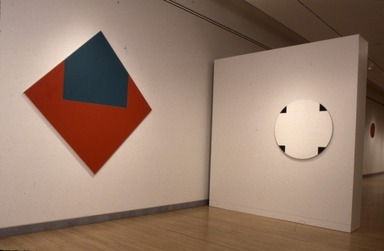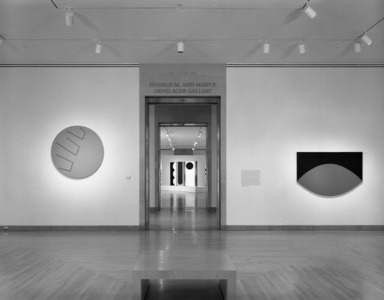

Leon Polk Smith: American Painter, September 29, 1995 through January 07, 1996 (Image: PHO_E1995i074.jpg Brooklyn Museum photograph, 1995)
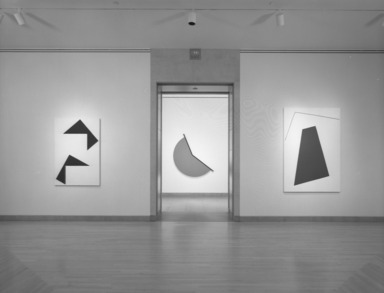
Leon Polk Smith: American Painter, September 29, 1995 through January 07, 1996 (Image: PHO_E1995i075.jpg Brooklyn Museum photograph, 1995)

Leon Polk Smith: American Painter, September 29, 1995 through January 07, 1996 (Image: PHO_E1995i076.jpg Brooklyn Museum photograph, 1995)
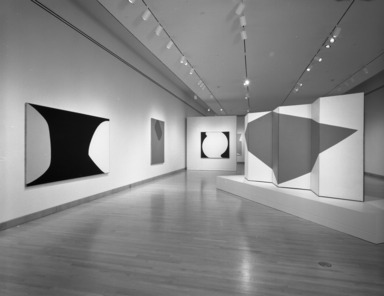
Leon Polk Smith: American Painter, September 29, 1995 through January 07, 1996 (Image: PHO_E1995i077.jpg Brooklyn Museum photograph, 1995)
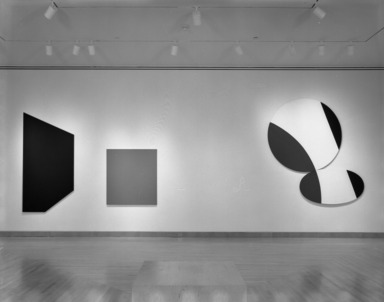
Leon Polk Smith: American Painter, September 29, 1995 through January 07, 1996 (Image: PHO_E1995i078.jpg Brooklyn Museum photograph, 1995)
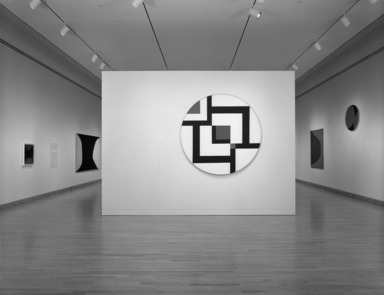
Leon Polk Smith: American Painter, September 29, 1995 through January 07, 1996 (Image: PHO_E1995i079.jpg Brooklyn Museum photograph, 1995)
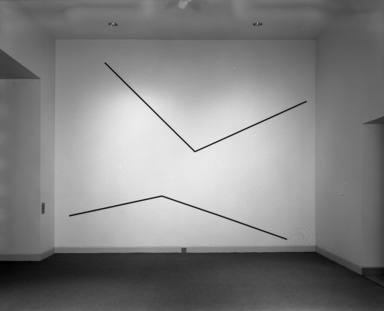
Leon Polk Smith: American Painter, September 29, 1995 through January 07, 1996 (Image: PHO_E1995i080.jpg Brooklyn Museum photograph, 1995)

Leon Polk Smith: American Painter, September 29, 1995 through January 07, 1996 (Image: PSC_E1995i023.jpg Brooklyn Museum photograph, 1995)

Leon Polk Smith: American Painter, September 29, 1995 through January 07, 1996 (Image: PSC_E1995i024.jpg Brooklyn Museum photograph, 1995)

Leon Polk Smith: American Painter, September 29, 1995 through January 07, 1996 (Image: PSC_E1995i025.jpg Brooklyn Museum photograph, 1995)

Leon Polk Smith: American Painter, September 29, 1995 through January 07, 1996 (Image: PSC_E1995i026.jpg Brooklyn Museum photograph, 1995)
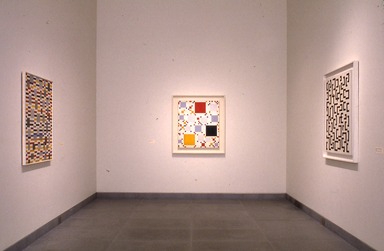
Leon Polk Smith: American Painter, September 29, 1995 through January 07, 1996 (Image: PSC_E1995i027.jpg Brooklyn Museum photograph, 1995)
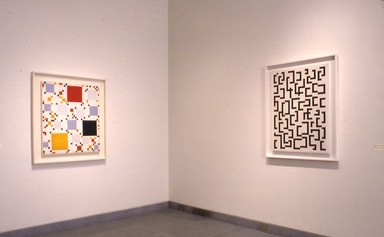
Leon Polk Smith: American Painter, September 29, 1995 through January 07, 1996 (Image: PSC_E1995i028.jpg Brooklyn Museum photograph, 1995)
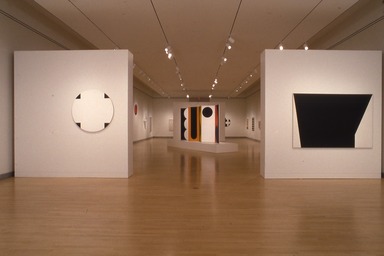
Leon Polk Smith: American Painter, September 29, 1995 through January 07, 1996 (Image: PSC_E1995i029.jpg Brooklyn Museum photograph, 1995)

Leon Polk Smith: American Painter, September 29, 1995 through January 07, 1996 (Image: PSC_E1995i030.jpg Brooklyn Museum photograph, 1995)
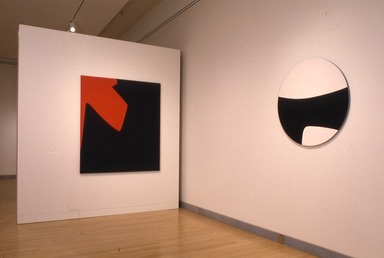
Leon Polk Smith: American Painter, September 29, 1995 through January 07, 1996 (Image: PSC_E1995i031.jpg Brooklyn Museum photograph, 1995)

Leon Polk Smith: American Painter, September 29, 1995 through January 07, 1996 (Image: PSC_E1995i032.jpg Brooklyn Museum photograph, 1995)

Leon Polk Smith: American Painter, September 29, 1995 through January 07, 1996 (Image: PSC_E1995i033.jpg Brooklyn Museum photograph, 1995)
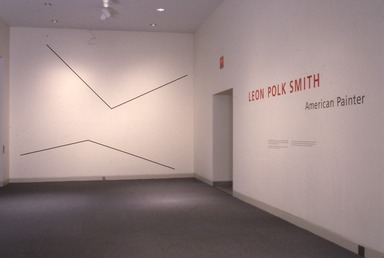
Leon Polk Smith: American Painter, September 29, 1995 through January 07, 1996 (Image: PSC_E1995i034.jpg Brooklyn Museum photograph, 1995)
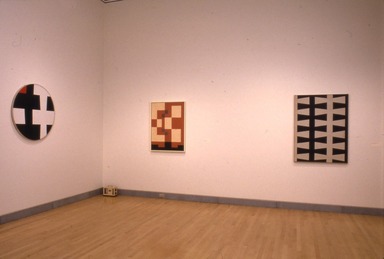
Leon Polk Smith: American Painter, September 29, 1995 through January 07, 1996 (Image: PSC_E1995i035.jpg Brooklyn Museum photograph, 1995)
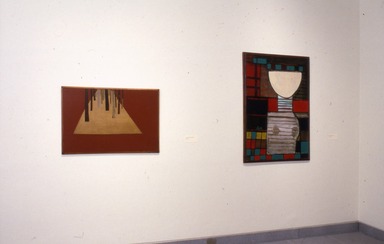
Leon Polk Smith: American Painter, September 29, 1995 through January 07, 1996 (Image: PSC_E1995i036.jpg Brooklyn Museum photograph, 1995)
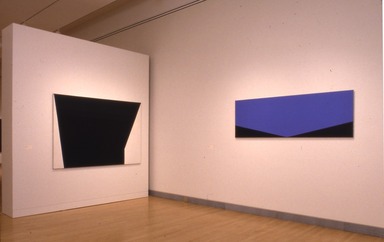
Leon Polk Smith: American Painter, September 29, 1995 through January 07, 1996 (Image: PSC_E1995i037.jpg Brooklyn Museum photograph, 1995)

Leon Polk Smith: American Painter, September 29, 1995 through January 07, 1996 (Image: PSC_E1995i038.jpg Brooklyn Museum photograph, 1995)

Leon Polk Smith: American Painter, September 29, 1995 through January 07, 1996 (Image: PSC_E1995i039.jpg Brooklyn Museum photograph, 1995)
Leon Polk Smith: American Painter
-
April 1, 1995
Leon Polk Smith: American Painter, the first comprehensive retrospective of the paintings of an artist who has championed nonobjective art for more than half a century, will be presented at The Brooklyn Museum from September 29, 1995, through January 7, 1996. “Now 89 years old and working in New York City, Leon Polk Smith was an influential pioneer in the development of American Modernism,” comments Robert T. Buck, Director, The Brooklyn Museum, adding, “He created a new vocabulary in painting that has had a far-reaching influence on subsequent generations of artists.” Organized by Brooke Kamin Rapaport, Associate Curator, Contemporary Art, and Mr. Buck, the exhibition comprises forty-five paintings, including works from the 1930s and paintings completed as recently as 1994.
Born in 1906, Smith was raised on farms and ranches among a large population of Choctaw and Chickasha Native Americans in the territory later annexed by the U.S. as the state of Oklahoma. He came to New York City in 1936 to study at Columbia University’s Teachers College and that same year saw masterpieces of European Modernism by Jean Arp, Constantin Brancusi, and Piet Mondrian, among others, from the A.E. Gallatin Collection then on view at the Gallery of Living Art, New York University. The young artist began his career depicting subjects inspired by life in Oklahoma and New York in an amalgam of Surrealist and Expressionist styles.
The power of Brancusi and Mondrian’s art was ultimately irresistable to Smith, and in 1940 he began to explore the formal problems inherent in the creation of nonobjective art. His tribute to Mondrian and New York, Homage to “Victory Boogie Woogie” #1 (1946), is a white canvas filled with large and small squares. Smith shared Mondrian’s affection for New York, writing in 1989, “New York City revealed its physical self to me through the mountains and canyons of the Southwest. There were the ups and downs—the high peaks, the in-betweens, or the canyons, and topped with the great dome. . . .I felt the city to be a perfect equation for a great abstraction.”
In 1954 Smith produced a series of drawings inspired by line drawings of baseballs and tennis balls he found in a sporting goods catalogue. This series led to his tondos: curvilinear forms painted on disk-shaped surfaces. Soon after he began exhibiting these paintings, other modes of nongestural abstraction, including Color Field, Minimalist, and Hard Edge painting, emerged, enlarging the definition of postwar American painting beyond Abstract Expressionism. Smith’s work was at the forefront of these movements.
In 1959 Smith began a series that he continued to develop through the following decade: the Correspondences. They reflect his determination to question conventional ways of seeing by confounding the viewer’s perception of the relationship between form and space. Correspondence: Red-Black (1962) consists of two shapes painted in flat color and defined by an irregular but carefully painted contour.
Smith began a series of modular paintings, the Constellations, in 1967, each one comprising as many as seven canvases that could be arranged in a number of configurations. Because the compositions of these monumental works appear to be the nucleus of a much larger area, the walls on which they are hung become meaningful parts of the installations. During the 1970s, he returned to the production of works completed on a single canvas, retaining the impression of vast space in some, and in others an active relationship with the wall. Twilight (1980), evokes an immense landscape under a clear, starless sky, while in Lobster Red (1984), linear sculptural elements, extending beyond the edge of the canvas, engage the wall, distinguishing that work and the entire series of Extended Space paintings, of which it is part.
Such recent works as Event in Orange (1994) are monochromatic canvases marked with black lines that engage but do not touch the edge of the canvas. The interval between the painted line and the physical edge is small but suggests infinite depth. As Smith said not long ago, “I can’t imagine that there is an end to space. It tells us that we are to keep going, to be optimistic.”
Leon Polk Smith: American Painter is supported, in part, by a grant from the National Endowment for the Arts. Additional support has been provided by the Richard Florsheim Art Fund. A wide range of education programs complements the exhibition. The exhibition is accompanied by an illustrated catalogue, featuring an interview with the artist and Brooke Kamin Rapaport, and essays by Arthur C. Danto, Johnsonian Professor Emeritus of Philosophy, Columbia University; John Alan Farmer; and Carter Ratcliff, author and critic.
Brooklyn Museum Archives. Records of the Department of Public Information. Press releases, 1995 - 2003. 01-06/1995, 113-5.
View Original

